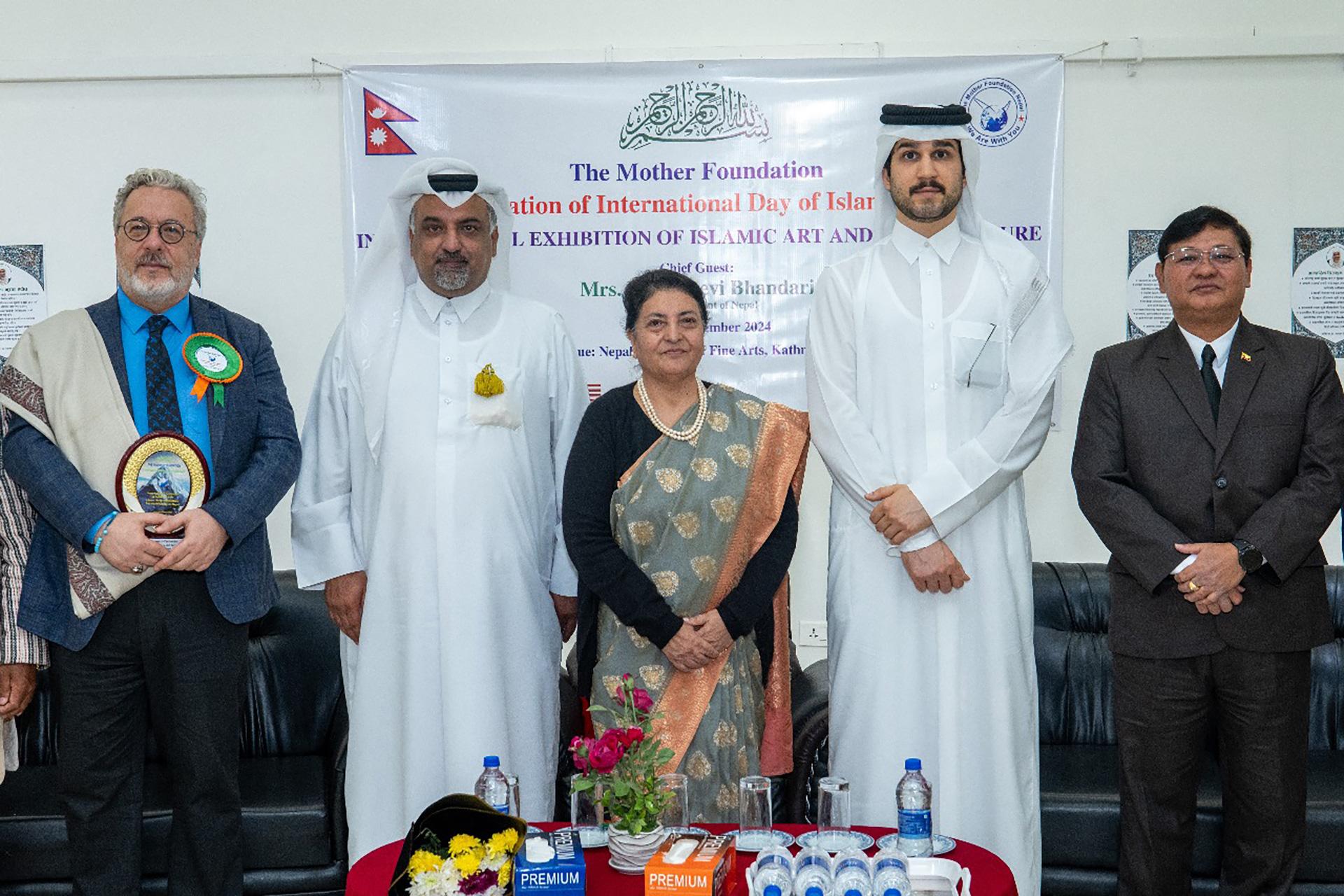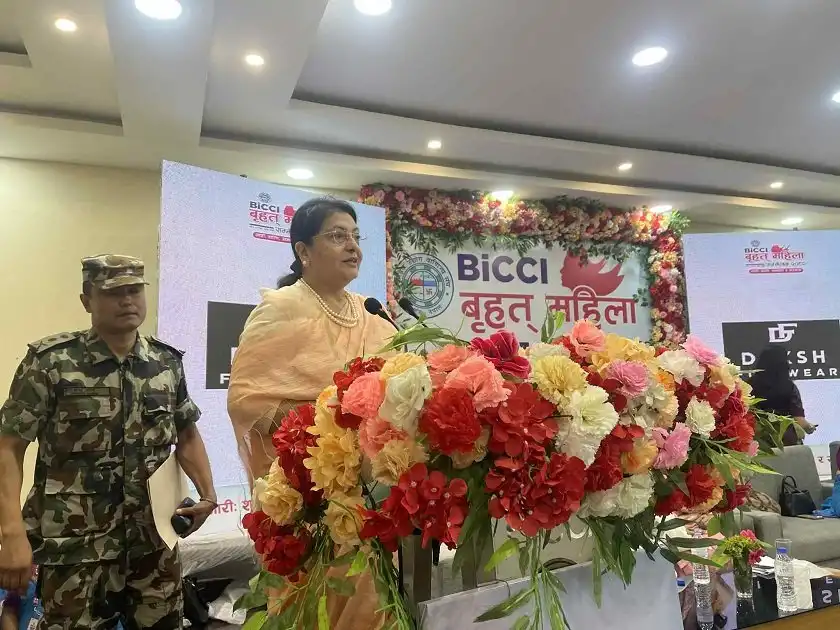Address by Former President Mrs. Bidya Devi Bhandari at the International Conference and Exhibition on Islamic Art and Architecture

Nepal Academy of Fine Arts, Kathmandu
Chairperson of this program,
Distinguished Guest Prof. Dr. Mahmud Erol KILIÇ
His Excellency the Acting Ambassador of Malaysia to Nepal and members of the diplomatic community,
Dr. Tabassum Siddiqui, Chairperson and Officials of The Mother Foundation,
Domestic and foreign delegates participating in the conference,
Media representatives,
Brothers and sisters.
I am pleased to be interacting with you today at this International Conference and Exhibition on Islamic Art and Architecture organized by The Mother Foundation Nepal on the occasion of International Islamic Art Day. On this occasion, I extend my heartfelt congratulations and best wishes to Muslim brothers and sisters of Nepal and around the world for the protection and promotion of Islamic art and architecture.
I would like to thank UNESCO for declaring November 18 as International Islamic Art Day in 2019. Since then, every year on this day, the celebration of Islamic Art Day highlights Muslim art, architecture, and culture, contributing significantly to the enhancement of human civilization.
I believe that today's conference and art exhibition will not only highlight the artistic expressions of the Islamic community's past and present but will also help raise awareness about cultural heritage among other communities, fostering mutual goodwill and tolerance. I appreciate the tireless efforts and dedication of former judge Dr. Salahuddin Akhtar Siddiqui and the hard work of Dr. Tabassum Siddiqui, Chairperson of The Mother Foundation, and I wish for the grand success of this event.
I am delighted to learn that this program aims to strengthen cultural harmony for positive social transformation in Nepal and to bolster international relations through art and culture. It highlights our multicultural, multilingual, and multi-religious nation's potential to promote global brotherhood and spread the message of peace. The provision of fundamental rights to equality in the Constitution of Nepal grants every Nepali community the right to preserve and promote their language, script, culture, civilization, and heritage, showcasing our nation's tolerance and broad-mindedness. I feel that today's event once again reflects our unique ethos of generosity and harmony.
Art and culture serve as significant mediums for communication and reconciliation. Islamic art can facilitate a civilized and meaningful dialogue among the world's diverse civilizations. I believe that such cultural interactions and exhibitions can bring people from different backgrounds together, contributing to the elevation of human civilization through positive transformation.
The global celebration of International Islamic Art Day not only promotes Islamic art but also inspires other artistic endeavors. It contributes to cultural diversity, freedom of expression, the preservation of tangible and intangible cultural heritage, and intercultural dialogue. I believe celebrating this day supports tolerance among people and promotes cultural reconciliation through the power of art.
Islamic art, with its cultural and historical significance, has made a considerable contribution to the promotion of aesthetics. It has influenced global art and design while playing a crucial role in Islamic culture. Islamic culture reflects Islamic values, prohibiting any actions against human development and dignity. Islamic art encompasses a wide range of fields, including architecture, calligraphy, painting, glasswork, textiles, ceramics, and culinary arts. This contributes to cultural and tourism promotion and ultimately aids the country's economic development.
Finally, I wish once again for the grand success of this Islamic Art and Cultural Exhibition and extend my good wishes for a fruitful and pleasant visit of the distinguished guest Prof. Dr. Mahmud Erol KILIÇ to Nepal.
Thank you.
Monday, Mangsir 3, 2081 B.S.
